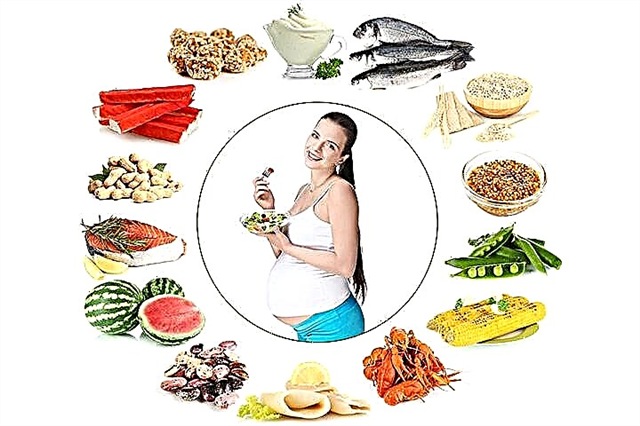Any mother is worried about the health of her baby, especially a newborn. One of the reliable indicators of the state of the baby's body is the type and color of his discharge, especially feces. Sometimes their shade becomes light, even gray, which makes parents worried, but often this is not a pathology.

Baby's stool is one of the main indicators of his health
Norms and pathologies of feces in infants
In newborns, feces differ significantly in consistency and color from that of an adult. The original feces (meconium) are black, odorless, smearing and similar to machine oil. All meconium is excreted within a few days after birth, the feces acquire a different consistency and color.

Newborn chair
When breastfed, what the baby leaves in the diaper is largely determined by the nutrition of his mother. Poop can have different shades: brown, yellow, orange, mustard, sandy, even greenish, this is the norm in the absence of other impurities and symptoms.
In “artificial” babies, the color of feces is usually yellow or brownish, sometimes it can even be blackish (when using iron-containing mixtures or improperly diluting them), the color rarely changes (only when changing the mixture).

Stool color in babies may vary.
In consistency, normal stool is similar to porridge, has a milky or sour curd smell (in infants). Newborns poop after each latching on to the breast (artificial ones are less common, since the mixture takes longer to digest), in children by 10 months, the frequency of bowel movements decreases to 1-2 times a day. If their number is much less, the baby's feces are hard, this indicates the problem of constipation, which is solved by proper nutrition of the mother and baby.
Note! If lumps of undigested food appear in the feces, you should not be frightened right away - this often comes from the immaturity of the baby's digestive system.
A child has gray feces when he is transferred from the breast to a formula or one brand of artificial nutrition is changed to another. A silvery shade in poop appears when feeding a baby with weakly diluted cow's milk - there is clearly too much protein for the body of the crumbs. If the child is taking certain medications (such as Ibuprofen, Agumentin, Paracetamol), his stool may also turn gray, which will change when the drugs are discontinued. If there is a large amount of dairy-plant food on the menu of a nursing mother, the baby will poop with light gray feces.
If foam, mucus or, even worse, blood streaks become noticeable in the child's feces, or it itself turns reddish, acquires a very unpleasant putrid odor, this is already a pathology that speaks of disorders in the digestive system.
Stool discoloration for various diseases
Quite often, by changing the color of feces, it is possible to determine in advance what problems have arisen in the body in a newborn and a child under one year old. So:
- the dark brown color of the poop indicates possible colitis, dyspepsia, overuse of animal protein in the infant's diet;
- red - occurs with inflammation, polyps, diverticula of the colon or anal fissures;
- yellow (oily consistency) can be in chronic pancreatitis or even celiac disease;
- green (abnormal consistency) - in violation of intestinal peristalsis;
- black - sometimes indicates internal bleeding;
- white - often caused by problems with the bile duct and liver disease;
- dirty gray putrefactive discharge sometimes also occurs with dysfunctions of the liver and pancreas.
Signs of pathological processes
If a child has a light, foul-smelling, glossy, grayish stool for a long time, this may be a sign of incipient pancreatitis. At the same time, the baby complains of pain in the tummy, nausea and vomiting, his temperature rises, and bloating is observed. Dysbacteriosis is characterized by pain in the navel, as well as light (greenish or grayish) stools with lumps of mucus.
If the child has gray poop, and the urine, on the contrary, is of a dark shade, while the baby has a general malaise, this may be signs of hepatitis A, which often infects children who go to kindergarten and school. Loose stools are initially yellow in color, gradually brightening, against the background of feeling unwell and fever, often observed in the first 3-4 days of rotavirus infection.
Also signs of incipient or sluggish dysfunctions from the gastrointestinal tract are:
- a decrease in the number of trips "in large" and the total volume of feces (although this may well be a simple underfeeding);
- very high density of feces, accompanied by increased flatulence and bloating;
- no or poor appetite for days or even weeks;
- stools with a foam and a pungent smell (especially in infants);
- black color may indicate internal bleeding;
- blood streaks in feces are common with breast milk allergy.
If the stool is gray-greenish
Feces from a breastfed baby, up to 11-12 months, can sometimes acquire a gray-greenish tint. Often this only indicates the immaturity of his digestive tract and liver, over time, the baby outgrows this problem, and the feces acquire a normal color. The same coloration of poop can occur if a nursing mother relies too much on vegetables (especially green ones: zucchini, broccoli, parsley) in her diet or takes certain medications (iron-containing or antibiotics).
Also, at 4-5 months of life, after the introduction of complementary foods, the child may react to various foods by changing the color of feces. So, dill water or fennel tea, allowed even for newborns, gives it a gray-green color to feces.

Fennel tea can color a child's stool gray-green
Additional Information. The baby's feces, which have been in the pot for some time, may simply oxidize in the air, then their surface will also acquire a grayish-green tint, this is normal.
Sometimes such a color of the child's feces indicates pathologies, for example, lactase deficiency or that children receive only less nutritious "front" milk, without bothering to get more fatty "back" milk. Such food passes through the intestines very quickly and can cause not only discoloration of poop, but also the appearance of foam and mucus in them.
On artificial feeding, the reason for the appearance of gray-green feces in a young child may be the presence of partially split proteins in mixtures (especially hypoallergenic). Therefore, it is necessary to very carefully select the mixture so that the baby does not develop gastrointestinal dysfunctions.
Diagnosis of violation
Microscopic and chemical studies of feces are very informative analysis and help determine the type and even localization of lesions.

Conducting laboratory tests of feces
In the direction of a pediatrician and a gastroenterologist, a bacteriological analysis of feces is carried out in the laboratory to determine helminth invasion, the presence of occult blood, enterovirus and dysbiosis. A bacterial culture is also done to identify pathogens that disrupt the intestinal function of a child.
The quantitative and qualitative indicators of the stool are determined, such as color, smell, consistency, the presence of certain substances, the number of microflora (for example, the activity of microorganisms is determined by the amount of short-chain acids), which are then compared with the standards for a particular age.
Important! To obtain reliable test results, it is necessary to properly prepare for its delivery: laxatives and other medications are unacceptable, it is advisable to thoroughly wash the child before defecation, it is undesirable to collect feces from the diaper (since then it can mix with urine residues), it is better to store a container with a fecal sample in the refrigerator no more days.
When you need a doctor
If the baby does not show signs of anxiety, eats well, cries little, his temperature is normal, there is no mucus or blood clots in the feces, observation for several days is enough, as well as analysis of the nutrition of the nursing mother (or wait for the baby to be "artificial »Adapts to the new mixture).
If the color of "child's surprise" does not take on the usual shade, lumps of mucus, foam or blood appear in it, the child develops rashes, the stomach swells, the temperature rises, sleep and appetite are disturbed, he becomes lethargic, spits up heavily, cries, and draws his legs to the tummy, this indicates the onset of pathological processes from the gastrointestinal tract, liver or pancreas and the need to urgently visit a pediatrician.

In case of problems with the gastrointestinal tract, the baby cries and pulls his legs to the stomach
After conducting the research, the doctor will prescribe an adequate treatment (special diet, medicines with enzymes, etc.), after which the color of the child's feces should return to normal.
The infant is very vulnerable due to the immaturity of the digestive system, so parents should closely monitor any changes in his condition. One of the best indicators of a baby's health is the color of its stool, which can vary. So, gray stool is not always a pathology, but may indicate the presence of dysfunction in the body. If the child is not worried about anything, it is worth watching him - perhaps it is just a reaction to a new food, formula or product in the mother's diet.



